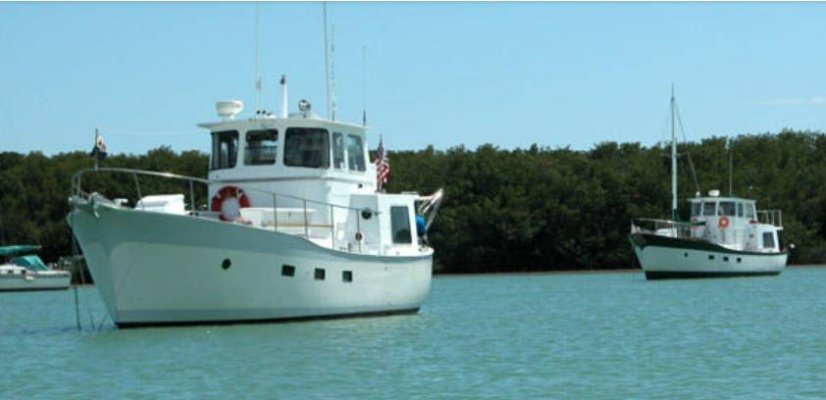PierreR
Guru
- Joined
- Oct 7, 2022
- Messages
- 567
- Vessel Name
- Mar Azul
- Vessel Make
- 1977 Hatteras 42 LRC
Kinda figured someone would call out for more information. The hull bottom as you refer to going aft is called aft buttock lines.PierreR is almost right .. but not.
One dosn't make a FD hull on a boat by cruising it a FD speeds.
A FD hull is a boat w the hull-form of a FD boat. It is 100% a matter of hull form. And most notably the quarter beam buttock line is the part of the question that most directly identifies the FD hullform. WO getting real technical the QBBL is the angle of the hull bottom as it rises (as one goes aft) from about amidships. This angle limits the fwd speed. The aft section/stern going over hull speed will pull the stern down and hence raise the bow.
All of this has nothing to do how fast a skipper runs his boat. It’s the hullform.
The Hatteras 42 LRC is a shallow draft boat (thank god) and depends on beam length to beam ratio to achieve that. That beam is carried well aft to give a lot of buoyancy to the stern. The wide stern is to control fore/aft pitch, allow for highly variable fuel loads and to allow for higher speeds than full displacement.
None the less, the aft buttock lines are fairly flat but not really enough to allow for a lot of lift. The chines are sharp at the transom and no part of the transom is above the water line at rest.
As you say, the hull form cannot be fooled even if the engines are overpowered. That is true and the handling characteristics of the 42 LRC prove to me beyond a shadow of a doubt that the hull form is semi displacement. A true displacement hull will start to wallow and hunt when driven above S/L ratios above 1.4. The 42 LRC still handles fine and begins to lift the bow. The stern wave you can surf on at 10 knots. The D/L ratio for this 42' boat is about 300. Given the length beam ratio of less than 3:1, this is consistent with the line drawings.
Now if you want to define full displacement by some other measure, that is up to you. I will stick with David Gerr and his teachings at Westlawn.
I have no problem with anyone believing that the Hatteras 42 LRC is a full displacement yacht. I am under no such illusion however, even I start to change the lines and power figures in my head more towards full displacement when I have not recently reviewed and calculated the lines. 30 Years ago, I decided on the Hatteras 42 LRC as a future boat. I happen to like the compromises Hargrave chose. The only difference from then to now is I prefer the MrkI menopause arrangement in the aft stateroom to the pre menopause setup for the Mrk II. Funny how age changes the preferences.

